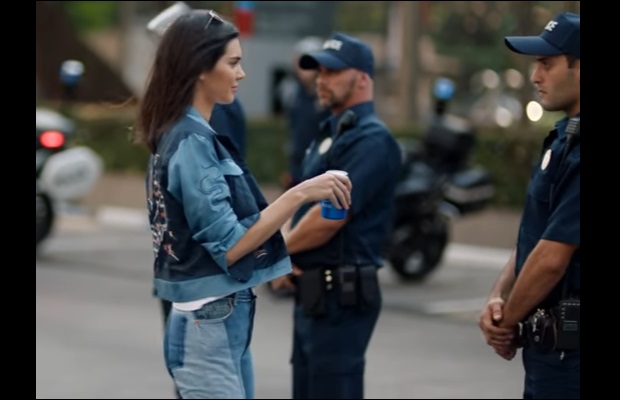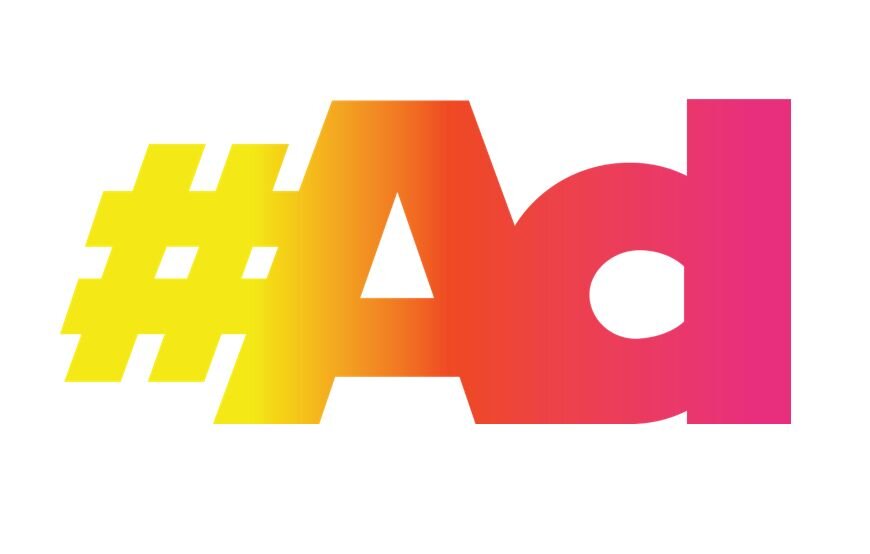
Leveraging the Power of Social Media Influencers: A Guide to Authentic Engagement
In today’s digital world, social media influencers have redefined how brands connect with their audiences. They’ve become the go-to storytellers who shape trends and conversations, making influencer marketing feel less like advertising and more like a friend sharing their favorite finds. When brands partner with the right influencers, they tap into communities built on trust, engagement, and authenticity – the secret ingredients to standing out in a crowded marketplace.
What makes influencer marketing so powerful is its authenticity. Instead of feeling like another ad, influencer content feels genuine, like a personal recommendation from someone you already trust. When done right, it’s like inviting your brand into the daily lives of potential customers, showing them how your product or service fits naturally into their world. This approach is what turns followers into fans and fans into customers.
Successful Large Influencer Marketing Examples
We’ve pulled together a couple of examples of influencer marketing done well.
Fenty Beauty & Rihanna: When Rihanna launched Fenty Beauty, she embraced influencers from all backgrounds, making inclusivity a core part of her brand. This approach wasn’t just smart – it was revolutionary, resulting in Fenty becoming a household name and achieving over $100 million in sales within the first 40 days.


Dunkin’ & Charli D’Amelio: Dunkin’ hit the mark by teaming up with TikTok star Charli D’Amelio to create “The Charli” drink. It was more than just a partnership; it was an interactive campaign that brought Dunkin’ closer to a younger, tech-savvy audience.
Large Influencer Campaigns the Missed the Mark
So, we’ve seen a couple of examples of what worked really well. Now let’s dive into a couple of examples of what failed.

Pepsi & Kendall Jenner: In 2017, Pepsi released an ad featuring Kendall Jenner handing a can of Pepsi to a police officer during a protest, aiming to convey a message of unity and peace. The ad was heavily promoted on social media, leveraging Jenner’s massive following.
Why It Failed: The campaign was seen as tone-deaf and insensitive, as it appeared to trivialize serious social justice movements by suggesting that a can of soda could resolve complex issues. The backlash was immediate, with many criticizing the ad for being out of touch and exploitative. Pepsi quickly pulled the ad and issued an apology, but the damage to its reputation was significant.
Snapchat & Rihanna: While Rihanna had great success with Fenty Beauty’s influencer marketing, she had a blunder with Snapchat. Snapchat ran an ad for a game called “Would You Rather?” which asked users if they’d rather “slap Rihanna or punch Chris Brown,” referencing a past domestic violence incident between the two.
Why It Failed: The ad was widely criticized as being offensive and tasteless, with Rihanna herself speaking out against it on social media. She urged her followers to delete the app, leading to a reported $800 million drop in Snapchat’s market value shortly after.

The Power of Micro and Local Influencers for Small Brands
Small brands are increasingly turning to micro and local influencers to amplify their reach without breaking the bank. Here’s how these influencers help small businesses create genuine connections with their audience and grow sustainably.
Micro-influencers, with followings between 10,000 and 50,000, may lack massive reach but make up for it with higher engagement and authenticity.
- Higher Engagement Rates: Their smaller followings foster a sense of trust, making recommendations feel more like advice from a friend.
- Niche Audience Reach: Micro-influencers often specialize in specific areas, so small brands can target highly relevant audiences.
- Cost-Effective: These partnerships are budget-friendly, allowing brands to collaborate without overspending.
- Flexibility: Micro-influencers are often more open to creative collaboration, leading to authentic content tailored to the brand.
Local Influencers: Building Community Connections
For brands focused on a local customer base, local influencers bring invaluable community insight and engagement.
- Hyper-Targeted Reach: Local influencers’ audiences are more likely to turn into actual, nearby customers.
- Community Engagement: Their local ties allow them to create culturally relevant content that resonates.
- Support for Local Businesses: Followers value seeing local brands supported, building positive community reputation.
- Perfect for Events: Local influencers can boost attendance at in-store events and drive traffic to physical locations.
Why Micro and Local Influencers Work for Small Brands
By focusing on micro and local influencers, small brands can build lasting connections without a huge budget. These partnerships allow for:
- Personalized, Long-Term Collaborations: Consistent engagement builds brand loyalty over time.
- Authentic Content: Micro and local influencers bring a personal touch to content, which audiences value over highly produced ads.
- Budget-Friendly Marketing: Effective for brands with limited budgets, these influencers maximize impact without big spending.
Micro and local influencers offer small brands a unique advantage by fostering genuine, trust-based connections. These partnerships make it easier for brands to connect with their target audience, driving community engagement and sustainable growth.
Measuring Success
Measuring the success of influencer marketing campaigns is crucial to understanding their impact and ensuring that your investment yields a positive return. Here’s a detailed look at key metrics that can help you track the ROI of influencer campaigns.

Engagement Rates
Engagement rate measures how actively the influencer’s audience interacts with the content. It includes likes, comments, shares, and saves on platforms like Instagram, TikTok, or Facebook.
- Why It’s Important: High engagement suggests that the influencer’s audience is genuinely interested in the content and, by extension, your brand or product. It’s a strong indicator of how well the message resonates with potential customers.
- How to Calculate: To find the engagement rate, take the total engagement (likes + comments + shares) and divide that by the total number of followers. Once you have that number, multiply it by 100.
- What to Look For: An engagement rate of 2–3% is considered average, while anything above 5% indicates strong engagement. Micro-influencers (with fewer followers) often have higher engagement rates compared to macro-influencers.
Pro Tip: Look beyond just the number of followers. An influencer with a smaller but highly engaged audience can often drive better results than one with a large but less interactive following.
Click-Through Rates (CTR)
Click-through rate measures how often people click on a link or call-to-action (CTA) within the influencer’s post, story, or bio.
- Why It’s Important: CTR is a strong indicator of how effectively the influencer drives traffic to your website, landing page, or product page. It reflects how compelling the influencer’s content and messaging are in encouraging action.
- How to Calculate: To calculate the CTR, take the total clicks and divide it by the total impressions. Once you have that number, multiply it by 100.
- What to Look For: CTR benchmarks vary by industry, but a rate of 1-3% is considered average. Higher CTRs indicate that the influencer’s audience is highly interested in learning more about your brand.
Pro Tip: Provide influencers with trackable links (using unique affiliate links) to accurately measure the traffic and CTR generated from their posts.
Conversions
Conversions refer to the number of people who take a specific desired action after engaging with the influencer’s content. This could be making a purchase, signing up for a newsletter, downloading an app, or filling out a contact form.
- Why It’s Important: Conversions are the most direct indicator of how effectively the influencer’s campaign drives actual business outcomes. They show whether the campaign is generating tangible results, such as sales or leads.
- How to Measure: Use unique discount codes, affiliate links, or dedicated landing pages to track how many conversions originated from the influencer’s content. Platforms like Google Analytics can help you monitor conversions attributed to influencer traffic.
- What to Look For: Look at both the overall conversion rate and the revenue generated to assess ROI. A strong conversion rate will vary by industry but typically falls between 1-4% of total traffic.
Pro Tip: Identify which types of content (e.g., Instagram Stories, TikTok videos, blog posts) generate the most conversions and optimize future campaigns accordingly.
Additional Metrics to Consider
Beyond these primary metrics, here are a few more to help you gauge the success of your influencer marketing campaign:
a. Reach and Impressions
- Reach: The total number of unique people who see the influencer’s content.
- Impressions: The total number of times the content is displayed, regardless of whether it’s clicked.
Why They Matter: Reach and impressions help you understand the potential exposure your campaign received. High reach means you’re getting your brand in front of a larger audience, while impressions indicate repeated visibility, which can aid in brand recall.
b. Follower Growth
Monitor how your brand’s social media followers grow during and after the influencer campaign. A spike in followers indicates increased brand awareness and interest.
Why It Matters: Follower growth suggests that the influencer’s audience finds your brand appealing enough to want to stay connected, potentially leading to future engagement and conversions.
c. Return on Investment (ROI)
ROI measures the financial return generated from the influencer campaign relative to the costs involved.
How to Calculate:
To calculate ROI, take the revenue generated and subtract the cost of the campaign. Divide that number by the cost of the campaign. Once you have that number, multiply it by 100.
Why It Matters: ROI provides a clear picture of the campaign’s profitability and helps determine whether it was worth the investment. Positive ROI means the campaign brought in more revenue than it cost, while negative ROI indicates a loss.
d. Sentiment Analysis
Sentiment analysis involves evaluating the tone and emotion behind the comments, mentions, and shares related to the influencer’s posts about your brand.
Why It Matters: Positive sentiment indicates that the audience is responding well to the campaign, while negative sentiment may highlight issues with the product, message, or influencer fit.
By monitoring these metrics, you can gain a comprehensive understanding of how your influencer marketing campaign is performing, enabling you to make data-driven decisions and optimize future campaigns for even greater success.
Consumer Protection & FTC Guidelines

Influencer marketing isn’t as easy as partnering with someone on social media. There are a few guidelines and rules put in place by the FTC to protect consumers.
Staying compliant with the Federal Trade Commission (FTC) guidelines is essential for ensuring transparency and maintaining consumer trust in influencer marketing campaigns. The FTC’s guidelines aim to protect consumers from deceptive advertising practices by requiring clear and conspicuous disclosure of any material connections between influencers and brands. Here’s a quick breakdown of what staying compliant entails:
Disclosure of Material Connections
A “material connection” refers to any relationship between an influencer and a brand that might affect the credibility of the endorsement. If there’s any form of compensation or relationship, the influencer must disclose it clearly. This includes:
- Receiving free products or services
- Being paid (whether in cash, discounts, or other incentives)
- Employment or personal relationships with the brand
How to Make Proper Disclosures
The FTC expects disclosures to be explicit and unambiguous. The disclosure should be:
- Clear and Conspicuous: The disclosure should be easy for the average consumer to notice and understand. It shouldn’t be hidden in long paragraphs, buried in hashtags, or require clicking “see more” to read.
- Proximate: The disclosure should appear near the endorsement message, ideally within the post itself or in the beginning of a caption, rather than at the end.
Platform-Specific Requirements
- Instagram Stories: Disclosures should be included in every frame of a story. Using stickers or text overlays with “ad” or “sponsored” is effective, as long as it’s easy to read.
- Live Streams: Disclose periodically during the stream, especially if it’s long, to ensure viewers joining at different times are aware of the sponsorship.
- Podcasts & Audio Content: Verbal disclosures must be made during the segment and should be easily understandable.
Endorsements Must Reflect Honest Opinions
The influencer must genuinely believe in the product or service they are endorsing. False, misleading, or exaggerated claims are not allowed. For example, if an influencer hasn’t tried a product, they cannot say they love it or have experienced its benefits.
No Misleading Claims
Influencers and brands must ensure that any claims about a product’s performance or benefits are truthful and substantiated. For instance, if an influencer promotes a weight-loss product, they cannot make unverified statements like “lost 10 pounds in one week!”
Responsibility of Both Influencers and Brands
Both influencers and the brands they work with are held responsible for ensuring FTC compliance:
- Brands: Should educate influencers about proper disclosures, monitor their content, and address non-compliance promptly.
- Influencers: Must understand the guidelines and take responsibility for making appropriate disclosures in every sponsored post.
Potential Consequences of Non-Compliance
Failure to comply with FTC guidelines can result in significant consequences, including:
- Legal action: The FTC can take legal action against both influencers and brands.
- Fines and Penalties: Brands and influencers can face hefty fines if they’re found to be deceptive in their advertising.
- Damaged Reputation: Non-compliance can harm both the brand’s and influencer’s reputation, leading to loss of consumer trust.
Best Practices for Staying Compliant
- Create a Disclosure Checklist: Develop a checklist that includes all FTC requirements to ensure every campaign is fully compliant.
- Regular Monitoring: Brands should monitor influencer posts to verify that proper disclosures are being made.
- Clear Contracts: Include FTC compliance clauses in influencer contracts, outlining the requirements and expectations for disclosure.
Staying compliant with the FTC guidelines is about ensuring honesty, transparency, and trustworthiness in influencer marketing campaigns. By following these guidelines, both brands and influencers can build authentic relationships with their audiences while avoiding legal troubles. Looking for more detailed information? Check out the FTC’s website here.
To wrap up, leveraging the power of social media influencers can be a game-changer for brands looking to expand their reach and connect with their target audience in a more authentic and engaging way. By learning from both successful and poorly executed campaigns, adhering to FTC guidelines, and diligently measuring key metrics, brands can maximize the impact of their influencer partnerships. When executed thoughtfully and strategically, influencer marketing can be a highly effective tool in building brand awareness, driving conversions, and ultimately delivering a strong return on investment. Remember, the key lies in finding the right influencers who genuinely align with your brand’s values and messaging, ensuring every collaboration feels authentic and resonates with your audience.
Looking to see how your company can maximize the use of social media influencers? Contact us today at https://barker-christol.com/contact, and we’ll help you determine the best course of action.
This article was created with assistance from AI technology to enhance clarity, accuracy, and provide additional insights. All content was reviewed and edited by our team to ensure it aligns with our values and expertise.
